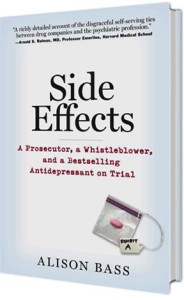Recent media coverage of the heated debate over Texas Governor Rick Perry’s endorsement of mandatory HPV vaccinations for school-age girls in his state seems to be missing a few crucial points. First, many of the medical groups who strongly endorsed the vaccine to prevent cervical cancer received funding from Merck, the maker of the vaccine in question, Gardasil. And two, Merck’s aggressive marketing campaign to sell the vaccine as a preventative measure against a relatively rare type of cancer (cervical cancer) in middle-class teenage girls completely ignored poorer populations that are at much higher risk of developing this cancer.
Such concerns were amplified in a thoughtful 2009 paper in JAMA, and reported by Gary Schwitzer’s healthnewsreview blog and Gooznews.
As the JAMA researchers noted:
As marketing of this HPV (short for human papilloma virus) vaccine demonstrates, pharmaceutical company campaigns can undercut the most cost-effective and appropriate use of new agents to the detriment of adolescent health. By making this vaccine’s target disease cervical cancer, the sexual transmission of HPV was minimized, the threat of cervical cancer to all adolescents maximized, and the subpopulations most at risk practically ignored.
Recent news reports do mention that Perry himself had substantial conflicts of interest when he signed an executive order mandating HPV vaccines for school-age girls, making him the only governor in the union to do so. As the San Francisco Chronicle notes, Perry has received at least $23,500 in campaign contributions from Merck, including $5,000 in 2006, the year before he ordered girls throughout the state to take the HPV vaccine. Merck also has donated about $500,000 to the Republican Governors Association, a group which Perry headed twice and has been among his most generous campaign donors. As the Chronicle and the New York Times also point out, Perry issued the executive order at a time when his former chief of staff was a lobbyist for Merck.
But the Times article fails to note the egregious conflicts of interest among key physician groups that strongly endorsed the vaccine for school-age girls. As the 2009 JAMA article pointed out, Merck provided educational grants to groups like the American College of Obstetricians and Gynecologists, the American Society for Colposcopy and Cervical Pathology (ASCCP), the Society of Gynecologic Oncologists (SGO), and the American College Health Association (ACHA), all of whom strongly recommended the vaccine in school-age girls.
The recent coverage also doesn’t explore the public health costs and benefits of mandating vaccines for affluent school-age girls, which, as Gooznews notes, doesn’t make a lot of financial sense. About 3,600 women die from cervical cancer every year — compared to approximately 40,000 who die from breast cancer annually. Yet Merck itself estimated it would cost $1.4 to $1.6 billion to immunize young girls from the disease, which can be picked up fairly easily (and much more cheaply) with regular pap smears.
As the JAMA researchers were the first to note, it would make far more sense to spend the money paying for pap smears for poorer women who have multiple partners but no health insurance.
I have to say I find it ironic that Perry is being lambasted by his Republican rivals for mandating something they say should have been left up to families to decide, which is the primary focus of today’s piece. But I wish the media would use this opportunity to explore the public health ramifications of allowing a drug manufacturer to aggressively target the wrong population for an expensive and possibly unnecessary vaccine.


